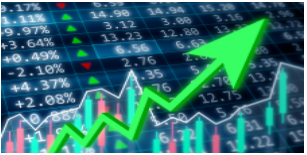RBS ser positivt på den økonomiske udvikling, fordi verdensøkonomien har demonstreret en imponerende modstandsdygtighed under pandemien. Der blev ikke en økonomisk krise som i 30’erne. Vaccinerne har vist sig effektive. De ledende indikatorer viser, at de er i overensstemmelse med en robust, økonomisk vækst, selv om de ikke er på niveau med målingerne i begyndelsen af året. RBS venter, at verdensøkonomien vil fortsætte den moderate udvikling, men den vil ligge over det normale niveau fra det seneste årti. RBS ser dog også nogle risikofaktorer: En forværring af pandemien med Omicron, usikkerhed i Kina og en vedvarende høj inflation. Men når RBS er optimistisk, skyldes det bl.a., at virksomhederne har haft en overraskende høj indtjening i år. Det udelukker dog ikke, at næste år bliver mere præget af volatilitet. Derfor anbefaler RBS investorerne at sikre sig en likviditet på 3 pct.
Market update – December 2, 2021
The global economy has demonstrated impressive resilience throughout the pandemic, buoyed by accommodative monetary policy, ample fiscal spending and human ingenuity. Vaccines are proving effective at curbing infections and hospitalization rates, and economies have largely re-opened enabling consumers, flush with savings, to spend again. Leading indicators for the economy are at levels consistent with robust economic growth although they are off their highs from early 2021 as the extraordinary growth rates of the initial phase of the recovery moderated (Exhibit 1). We look for global growth to continue on its moderating trend but to remain above normal levels from the past decade.
Exhibit 1: Global purchasing managers’ indices
Note: as of December 1, 2021. Source: Haver Analytics, RBC GAM
Key risks: virus, China, inflation
A variety of risks could derail our benign base case scenario. The Omicron virus variant presents a new threat, and the extent to which the spread can be contained and/or the speed at which populations get vaccinated will be critical for economies to operate at their full potential.
China presents another major source of uncertainty where stricter regulations, slowing growth and a highly indebted real estate sector pose challenges to the world’s second-largest economy.
Another key risk is that inflation is running hot amid high demand, a shortage of workers and supply chain constraints (Exhibit 2). That said, inflationary pressures could soon begin to calm given that shipping costs and certain commodity prices are off their recent highs. But because consumer-price adjustments often occur on a lagged basis we continue to expect above-normal inflation over the medium term.
Exhibit 2: Implied long-term inflation expectation
Breakeven inflation rate: nominal vs 10-year real return bond
Note: As of December 1, 2021. Eurozone represents GDP-weighted breakeven inflation of Germany, France and Italy. Source: Bloomberg, RBC CM, RBC GAM1
Note: as of November 30, 2021. Source: Bloomberg, U.S. Federal Reserve, RBC GAM
Stocks encountered volatility, valuations remain elevated
Many equity indices climbed to new highs during the quarter but retreated toward the end of the period on concerns of fading stimulus, slowing growth and a flare up in the virus. Performance was highly varied between regions, with emerging markets lagging and developed markets ahead. In particular, U.S. large-cap growth stocks outperformed and the technology-heavy S&P 500 eked out a slight gain for the quarter bringing its year-to-date gains over 21%.
Our multi-factor model situates the S&P 500 at more than one standard deviation above fair value and it is the most expensive of the major markets (Exhibit 5). While other regions are more attractive on a relative basis, many markets outside of the U.S. are no longer trading at discounts to their own fair values. Elevated valuations pose a headwind to further upside for stocks, may result in more volatility and pose a vulnerability should economic conditions deteriorate.
Exhibit 5: S&P 500 equilibrium
Normalized earnings & valuations
Note: the fair value estimates are for illustrative purposes only. Corrections are always a possibility and valuations will not limit the risk of damage from systemic shocks. It is not possible to invest directly in an unmanaged index. Source: RBC GAM
Corporate profits surge
Supporting the strong gains in equities this year has been the tremendous growth in corporate profits. S&P 500 earnings are expected to be $205 in 2021, up 47% versus 2020 and soaring past the prior high of $163 in 2019. The recovery in corporate profits has been spectacular and earnings are now tracking ahead of their pre-pandemic expected trajectory (Exhibit 6).
Analysts have been persistently underestimating profits in this environment evidenced by more than 80% of earnings releases exceeding estimates in each of the past several quarters. Looking ahead, expectations for mid-to-high single digit nominal U.S. GDP growth are consistent with double digit profit growth for the S&P 500 again next year.
Exhibit 6: S&P 500 Index
12-month trailing earnings per share
Note: as of December 1, 2021. Estimate is based on a consensus of industry analysts’ bottom-up expectations. Source: Thomson Reuters, RBC GAM
Asset mix – another modest trim to our equity overweight
Our current recommended asset mix for a global balanced investor is 63.5% equities (strategic: “neutral”: 60%), 33.5% bonds (strategic “neutral”: 38%) and 3.0% in cash.







